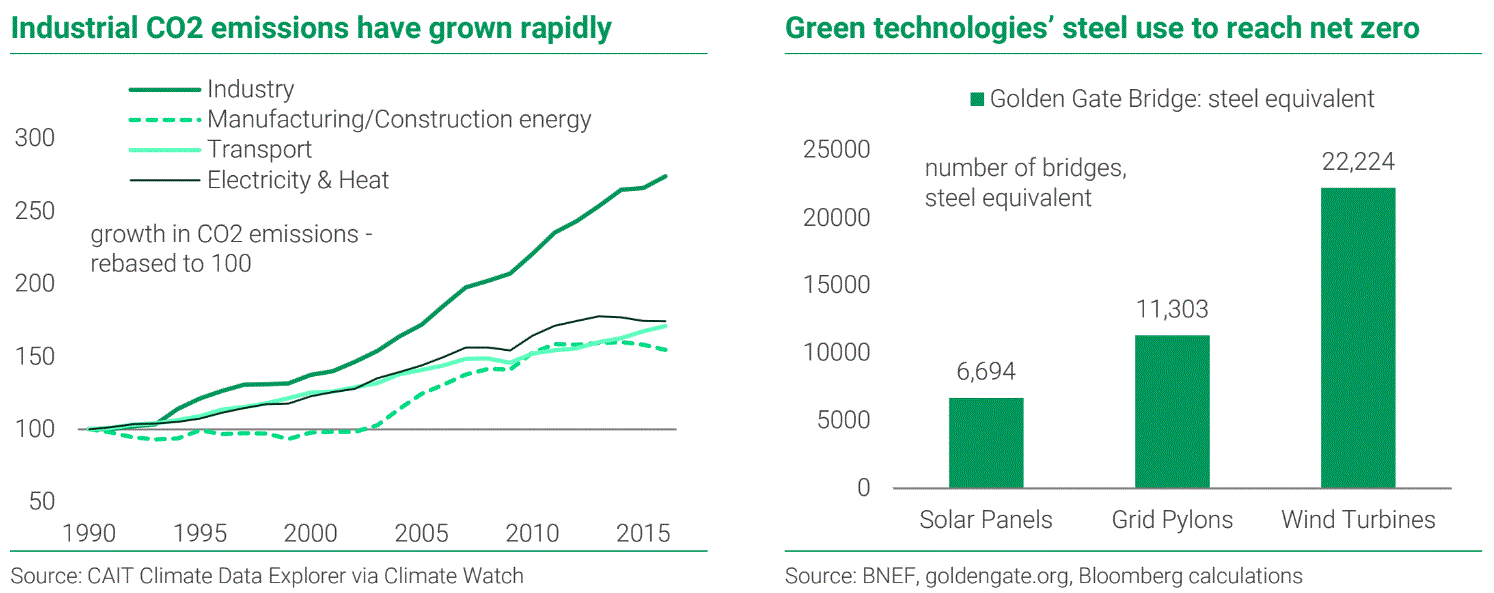TSLomberd with the note:
We buy a basket of five ‘green steel’ stocks: ArcelorMittal, ThyssenKrupp, SSAB, Fortescueand Voestalpine (MT NA, TKA GR, SSABA SS, FMG AU, VOE AV), equally weighted at 20% each relative to selling the SPDR S&P Metals and Mining ETF. While the green steel movement is still nascent today–saddled with high initial costs, hefty capex commitments and still-lagging regional policy frameworks–its use will become increasingly important to both green technologies and the next phase of infrastructure investment, as climate resilience and carbon accounting is prioritized this decade and beyond. Early movers will have an advantage over latecomers, especially when bolstered by public funding and ambitious climate legislation (as in the EU today), given the sector’s decades-long investment cycle. Joining forces with the GreenDeal, the EU Recovery Plan gives climate transition a central role in the continent’s blueprint for economic recovery and growth. The EU Recovery Plan’s additional stimulus for the period 2021–27 is expected to total around €1.85 trillion, roughly a quarter of which could be allocated to climate transition-related investments. Europe’s drive to green its economy will lead to a new range of opportunities in infrastructure investment.We therefore pinpoint green steel progress as a key leading indicator of longer-term industry growth fundamentals ahead, even if it will not beacore generator of company profits for several years.As for other steel industry metrics, earnings have been upgraded amid a rosy outlook for the sector, aided by a slow future supply pipeline. Valuations have derated significantly and have diverged from the overall market, offering an attractive entry point.

‘Code red for humanity’ ratchets up the pressure on policy makers. Recent extreme weather events from the Pacific northwest to central Europe to China highlight the deficiencies of existing infrastructure (e.g.melting power lines, buckling asphalt roads, flooded subway stations and tunnels) and the need to ‘build back better’ with greater resilience and new architectural designs as well as more low-carbon construction solutions. The recently released IPCC report on climate change warns that unless drastic change is undertaken now, warming is not only on track to exceed 1.5–2°C above pre-industrial levels–the target of the 2015 Paris climate accord–but sea-level rise is likely ‘irreversible’ even in the best-case scenario. Although the G20 talks last month ended with a disappointing failure by key emitters, notably China and India, to commit to phasing out coal and fossil fuel subsidies, the IPCC report will exert newfound pressure on world leaders to step up their emissions reduction targets, as well as to pick up the pace of carbon capture and other green technologies. Still, even assuming that the upcoming UN climate conference in November (COP26)will fail to deliver big breakthroughs in global climate policy, our base case is that the growing frequency of extreme weather events will ultimately force even climate laggards to adopt bolder structural changes this decade, propelling the building of greener economies and cities over the next five to ten years.

